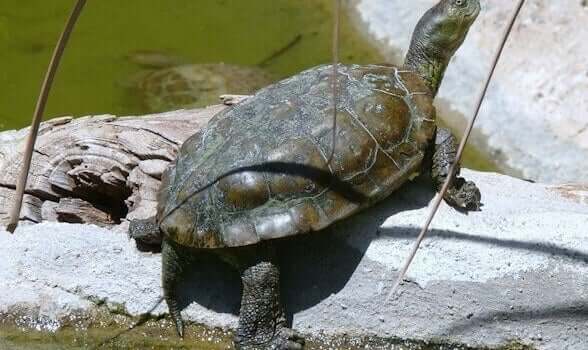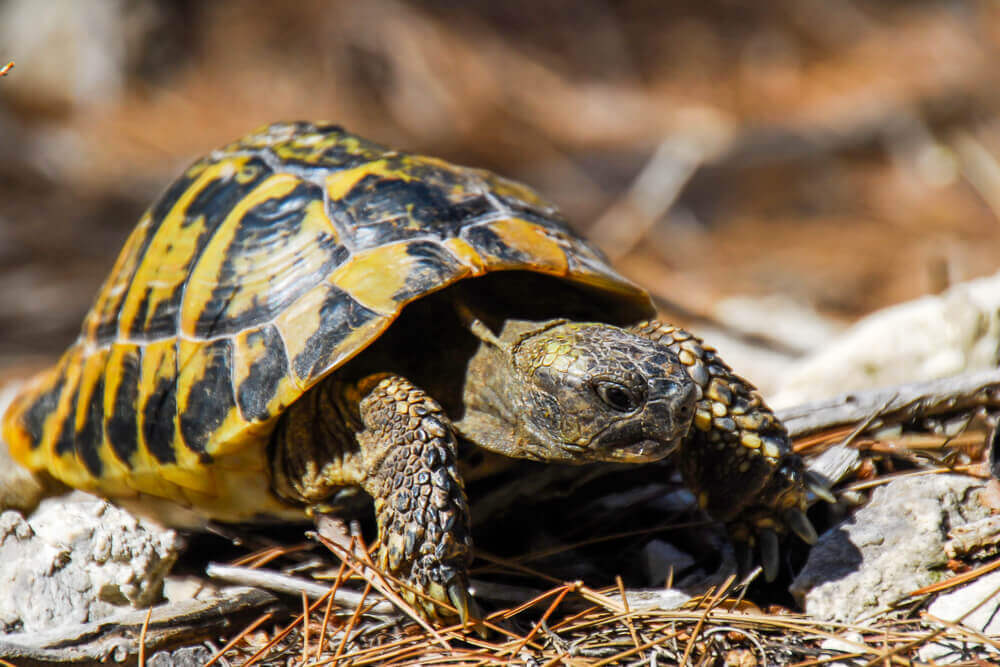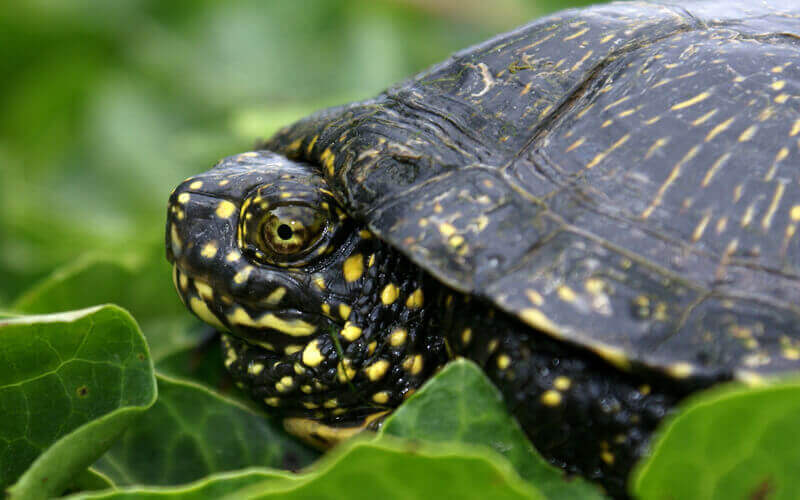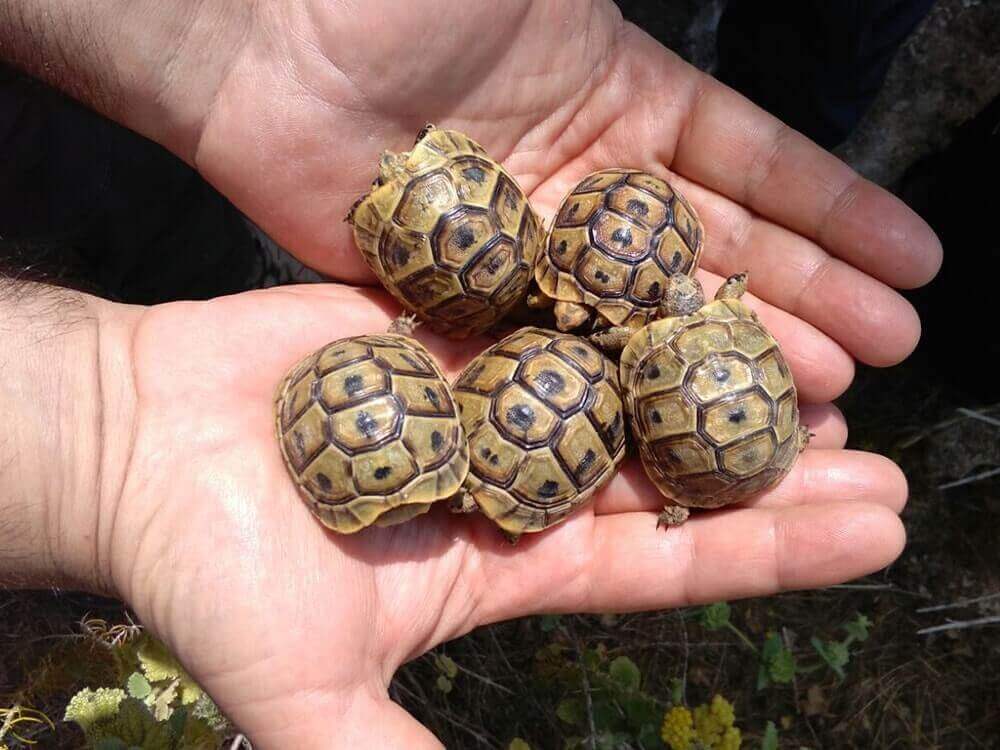The Fascinating World of Turtles in Spain


Written and verified by the vet Érica Terrón González
We could consider turtles in Spain to be relatively insignificant compared to other countries like the United States or India. In Europe, however, Spain has the greatest number and variety of turtles, with several well-preserved populations, some of which are quite numerous.
Turtles in Spain
Which turtle species exist in Spain?
There are five families that belong to the cryptodira group. Within these, there are a total of 11 species, with pond and sea turtles being the most numerous. In total they are:
- Two species of tortoise: the Greek tortoise (Testudo graeca) and Hermann’s tortoise (Testudo hermanni).
- Four species of pond turtle: the Spanish pond turtle (Mauremys leprosa), the North African pond turtle, Obst’s pond turtle, and the common European pond turtle.

Source: http://www.zoologicoelbosque.com/
- Five species of sea turtles: the green sea turtle (Chelonia mydas), the loggerhead sea turtle (Caretta caretta), the leatherback sea turtle (Dermochelys coriacea), the Kemp’s ridley sea turtle (Lepidochelys kempii) as well as the hawksbill sea turtle (Eretmochelys imbricata).
Their distribution is split between Iberian-Balearic fauna and Canarian fauna.
Where are they found?
Distribution of turtles in Spain
We can find sea turtles in all Spanish seas, but they are more abundant in the Mediterranean. The peninsula and Balearic islands don’t have any endemic species. Therefore, the species you’ll see in Mallorca are species that you may well find in the northeast of the Spanish mainland. This is the case with the Hermann’s tortoise and the Greek tortoise.

In the Canary Islands, however, you’ll only find sea turtles, since pond turtles or tortoises don’t exist at these latitudes.
Regional distribution
With regard to regional distribution, the areas with the highest number of species are protected areas and are often close to river mouths. This is good for the entry of sea turtles and helps maintain pond turtle populations.

The regions with the highest density of species are:
- Doñana National Park in Andalusia
- The Natural Park of the Delta del Ebro in Catalonia
- The northeast of Catalonia
The humidity of the areas around Doñana and the Delta del Ebro and their nature as parks are essential aspects for conserving turtle species in Europe.
Are there areas in Spain without turtles?
There are two possible conclusions to draw about the lack of turtles or tortoises in some parts of Spain. These are:
- That in some of these areas experts confirm that there are no turtles or tortoises due to the difficult climate for cold-blooded animals.
- The possibility that their existence is unknown due to the lack of herpetologist studies.
Examples
In Galicia, there are currently well-established populations of Spanish pond turtles in the lower Miño basin, when in theory the temperature shouldn’t be suitable. This suggests that in theory what is missing are studies, not animals. However, in the case of the Catalan-Aragonese Pyrenees, the absence of turtles is undoubtedly due to the mountainous terrain.
The largest populations are in the southwest of Spain. This is due to the coexistence of two species of pond turtles in large areas covering the provinces of Huelva, Cádiz, part of Seville, Córdoba, Cáceres and Toledo, and practically all of Badajoz and Ciudad Real.

In Almería and Murcia, there is the largest population of Greek tortoises in the whole of Spain, particularly found in Sierras de Almenara. In the autonomous cities of Ceuta and Melilla, only one species has been found, the Spanish pond turtle, although experts believe that Greek tortoises were there at one point.
As you can see, Spain has a large and diverse population of turtles and tortoises across the country, thanks in part to its protected wetlands.
Source of main image: https://serbal-almeria.com
All cited sources were thoroughly reviewed by our team to ensure their quality, reliability, currency, and validity. The bibliography of this article was considered reliable and of academic or scientific accuracy.
- Merchán Fornelino M, Martínez Silvestre A. Tortugas de España. Madrid: Antiquaria; 1999.
This text is provided for informational purposes only and does not replace consultation with a professional. If in doubt, consult your specialist.